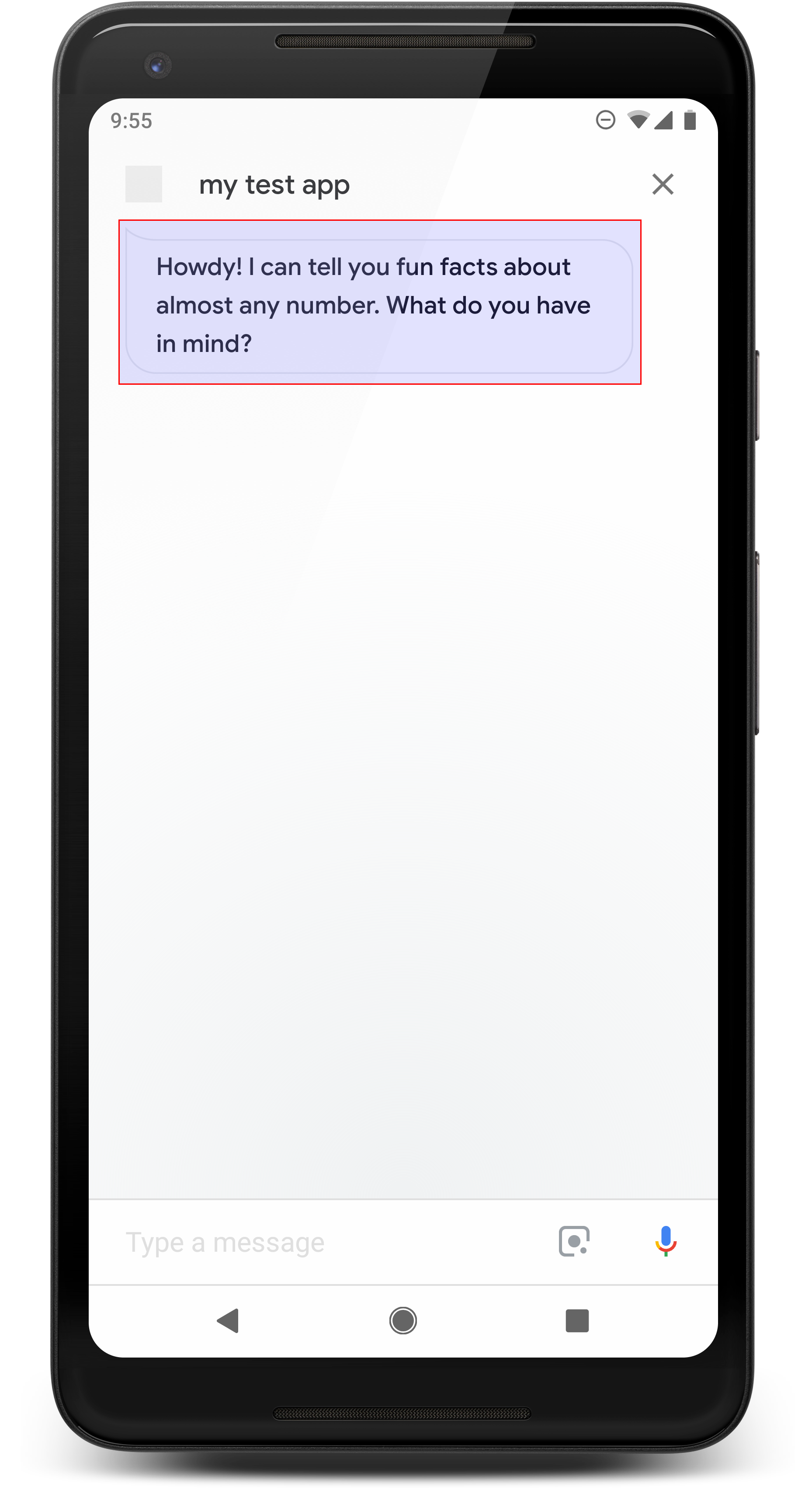
Le risposte semplici assumono la forma di un fumetto della chat e utilizzano la sintesi vocale. (TTS) o SSML (Speech Synthesis Markup Language) per l'audio. Usando lo Short risposte semplici durante una conversazione, puoi mantenere coinvolti gli utenti con una e audio che possono essere abbinati ad altri elementi conversazionali.
I contenuti delle bolle di una chat in una risposta semplice devono essere un sottoinsieme fonetico o un contenuto completo della trascrizione dell'output TTS/SSML. Questo aiuta gli utenti a capire qual è la tua azione afferma e aumenta la comprensione in varie condizioni.
In un prompt, il testo fornito negli oggetti first_simple e last_simple
usano le proprietà di una risposta semplice. L'Assistente Google invia tutte
risposte in un prompt, quindi invia la risposta avanzata finale nella coda dei prompt.
Proprietà
Il tipo di risposta semplice ha le seguenti proprietà:
| Proprietà | Tipo | Requisito | Descrizione |
|---|---|---|---|
speech |
stringa | Facoltativo | Rappresenta le parole da pronunciare all'utente in SSML o sintesi vocale.
Se il campo override nel prompt contenente è "true",
la parola definita in questo campo sostituisce la precedente
voce di un prompt. |
text |
stringa | Facoltativo |
Testo da visualizzare nel fumetto della chat. Stringhe più lunghe di 640 caratteri vengono troncati alla prima interruzione di parola (o spazio vuoto) prima di 640 caratteri. Consigliamo di utilizzare meno di 300 caratteri per evitare che i contenuti si estendono oltre lo schermo, soprattutto se abbinati a un una scheda o un altro elemento visivo. Se non viene fornito, l'assistente esegue il rendering di una versione display
|

Codice di esempio
YAML
candidates: - first_simple: variants: - speech: This is the first simple response. text: This is the 1st simple response. last_simple: variants: - speech: This is the last simple response. text: This is the last simple response.
JSON
{ "candidates": [ { "first_simple": { "variants": [ { "speech": "This is the first simple response.", "text": "This is the 1st simple response." } ] }, "last_simple": { "variants": [ { "speech": "This is the last simple response.", "text": "This is the last simple response." } ] } } ] }
Node.js
app.handle('Simple', conv => { conv.add(new Simple({ speech: 'This is the first simple response.', text: 'This is the 1st simple response.' })); conv.add(new Simple({ speech: 'This is the last simple response.', text: 'This is the last simple response.' })); });
JSON
{ "responseJson": { "session": { "id": "session_id", "params": {} }, "prompt": { "override": false, "firstSimple": { "speech": "This is the first simple response.", "text": "This is the 1st simple response." }, "lastSimple": { "speech": "This is the last simple response.", "text": "This is the last simple response." } } } }
SSML e suoni
Usa SSML e suoni nelle tue risposte per dare un tocco di eleganza e migliorare la un'esperienza utente positiva. Per ulteriori informazioni, consulta la documentazione SSML.
Raccolta audio
Mettiamo a disposizione una vasta gamma di suoni brevi e senza costi nella nostra raccolta di suoni. Questi i suoni sono ospitati per te, quindi tutto quello che devi fare è includerli nel tuo SSML.

